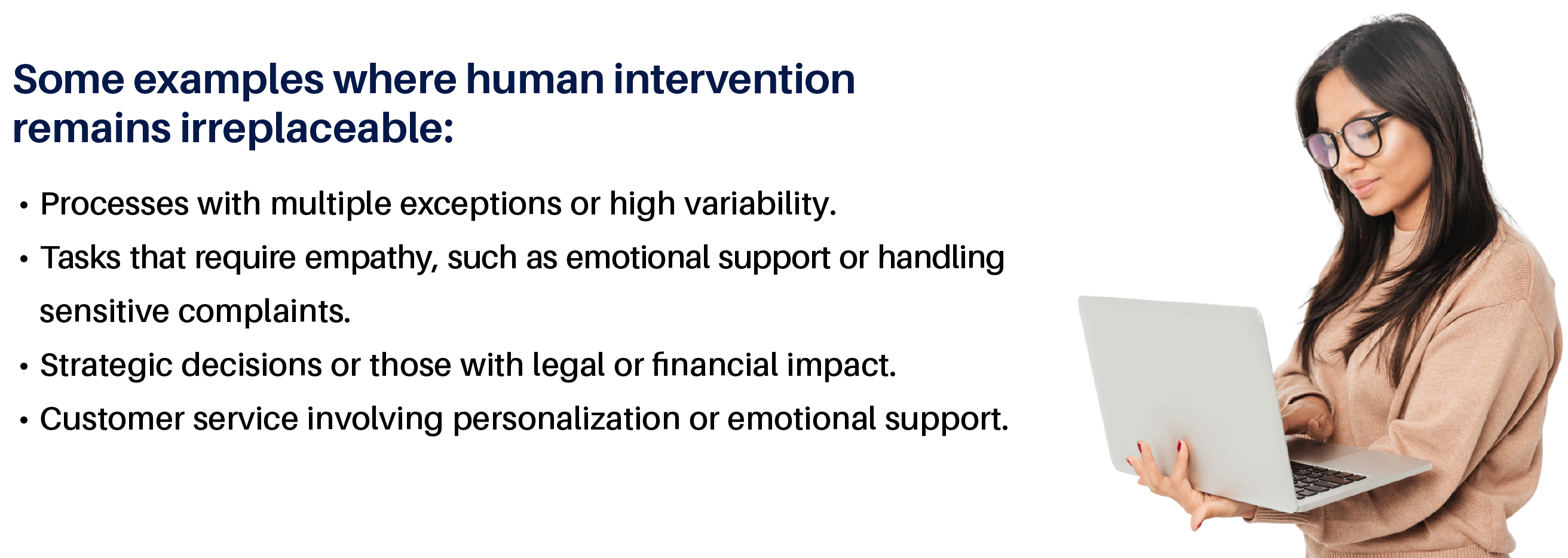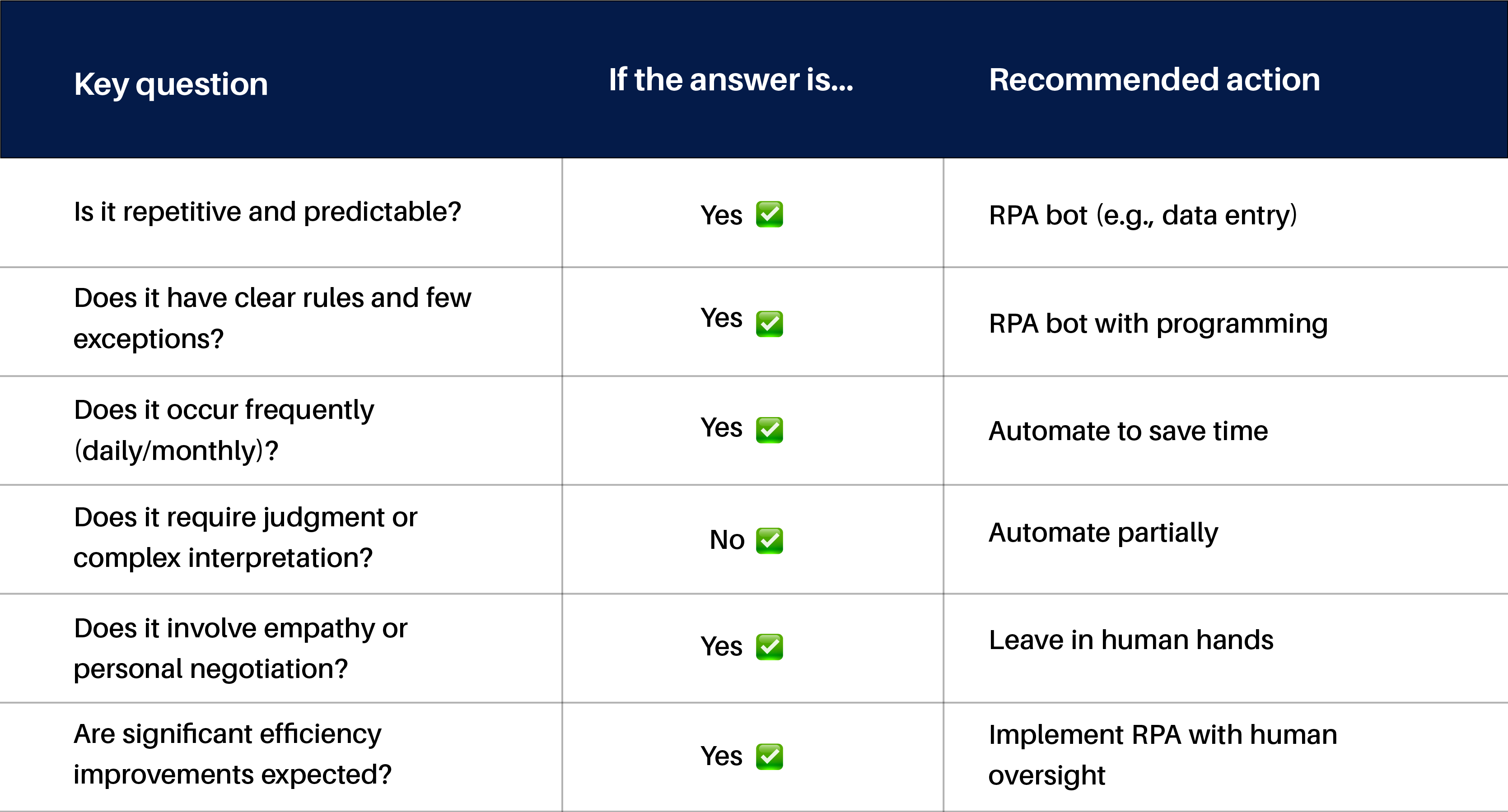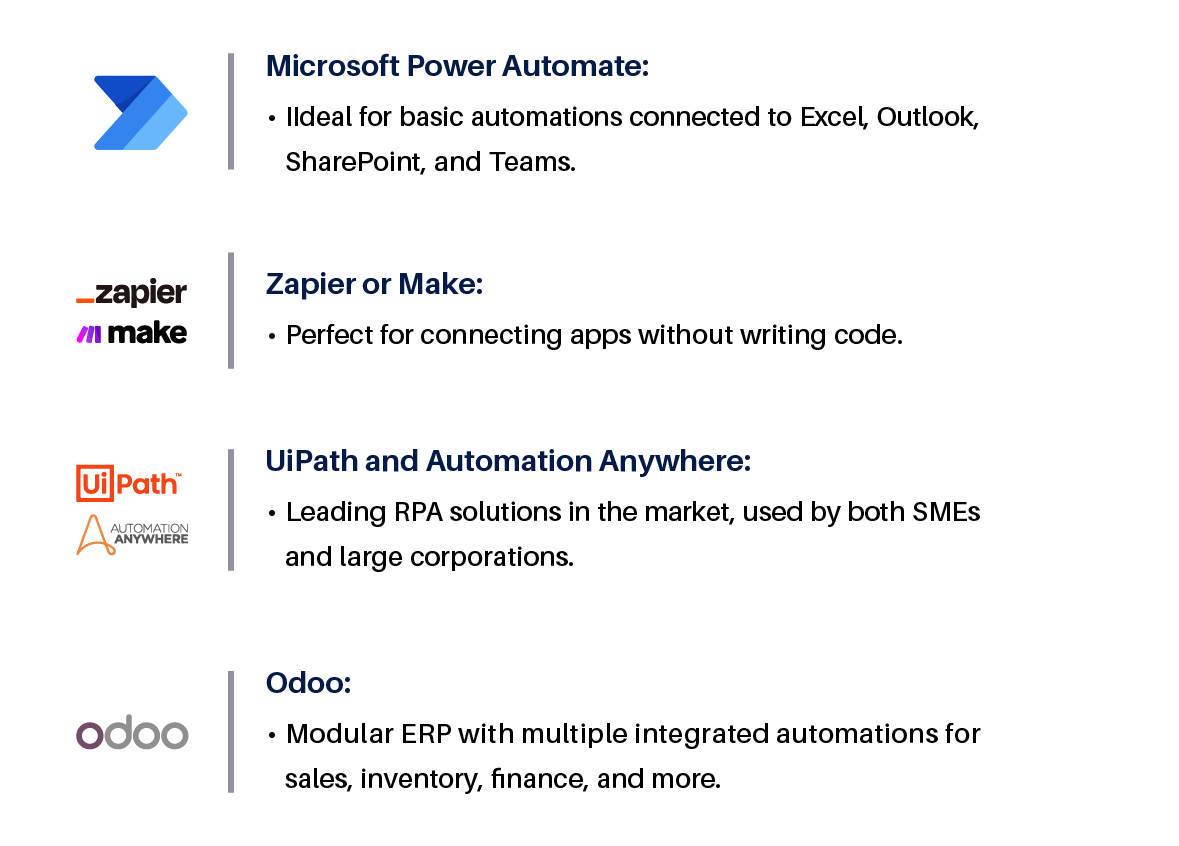Intelligent automation: when to use bots and when people?
To automate or not to automate? In this article, you'll learn when to use bots and when it's best to let people lead the process. We explain how to achieve intelligent and balanced automation, with real data, practical examples and accessible tools to start today.

Intelligent automation: when to use bots and when people?
In an environment where efficiency defines competitiveness, intelligent automation has become an essential tool for companies seeking to scale their operations without increasing their costs proportionately. But the real question isn't whether you should automate, but What should you automate And When is it best to keep people at the center of the process.
This article answers that question clearly, using real data and a practical perspective to help you make more informed decisions.
What is intelligent automation?
Intelligent automation combines Robotic Process Automation (RPA) with artificial intelligence technologies. While RPA is responsible for repetitive and structured tasks such as capturing data or sending automated emails, AI allows systems to interpret documents, detect patterns and even adapt to changes in workflows.
This combination allows processes to not only be automated, but also to be optimized over time. A well-configured system can learn from mistakes, adapt to new business conditions, and make simple decisions without human intervention.
According to Strategic Market Research, the global RPA market will exceed $13 billion in 2026. This reflects a clear change: more and more companies are adopting these tools as an integral part of their operation, not just as a technological experiment.
When to use bots?

Processes such as bank reconciliation, invoice processing, sending automatic notifications or entering data into ERP systems are common examples. In these cases, bots not only execute tasks faster, but they do so with greater precision and without pauses, since they can work 24/7.
Implementing RPA in this type of flow reduces execution times by up to 80% and eliminates more than 70% of errors, according to data from World Metrics. In addition, the return on investment is usually visible in less than a year.
And when should people step in?
Not everything can or should be automated. People remain essential in processes where there is ambiguity, creativity, context or emotions involved.

In addition, the so-called Automation Bias, or overtrust bias in automated systems, can lead to erroneous decisions without human oversight. For example, in processes where legal documents or sensitive situations are analyzed, a bot can misinterpret data, but a human being has the ability to understand the context and make informed decisions.
The Hybrid Approach: The Best Strategy
Automation should not be a replacement for people, but a complement. The most effective approach—and the most common among successful businesses—is the hybrid approach: bots for structured, repetitive tasks, and people for what requires judgment, empathy, or strategic thinking.
A Wired study revealed that this collaborative model can reduce errors by up to 25% and increase overall productivity by 40%. In customer service, for example, a bot can respond to frequent requests and automatically escalate complex cases to a human agent, who can solve the problem more sensitively.
This model also helps improve the employee experience, freeing teams from routine tasks and allowing them to focus on more strategic or creative activities.
How to decide what to automate

In addition, it is useful to map processes in your company and classify them according to level of complexity and frequency. Those processes with high frequency and low complexity are the first candidates for automation. Then, it can be gradually scaled up to more complex processes with partial human intervention.
Examples by industry
Intelligent automation is already transforming different industries with tangible results.
In finance and accounting, reports, reconciliation, transaction validation and accounts payable control are automated.
In Health, bots manage medical records, appointment scheduling and claims processing.
In manufacturing and logistics, inventory management, purchase orders, predictive maintenance and quality monitoring are automated.
And in human resources, processes such as staff onboarding, resume analysis and payroll management are being completely digitized.
Each of these cases demonstrates how automation can adapt to different operational realities, reducing errors, increasing response speed and generating substantial savings.
Accessible tools to get started
You don't need big investments to get started. Today, there are accessible platforms for automating internal processes from day one.
Some useful tools include:

The important thing is to start with simple, measurable processes. Well-implemented automation, however small it may seem, can bring about a positive cultural change in your company.
Common Risks and How to Mitigate Them
Automating without strategy can create more problems than solutions. Among the most common errors are:
Automate poorly defined or inefficient processes from the start.
Don't train the team to use new tools.
Lack of post-implementation monitoring and adjustments.
Losing control over important decisions by blindly trusting bots.
To mitigate these risks, it is essential to have a clear vision of what you want to achieve, define success metrics, and establish mechanisms for monitoring and continuous improvement. Automating doesn't mean disconnecting, but keeping abreast of how the system evolves and where human judgment is still needed.
The Future: Automation with AI and Autonomous Agents
Beyond traditional bots, the next step is the integration of autonomous agents with artificial intelligence, capable of analyzing data in real time, generating contextualized responses and learning from each interaction.
Companies such as Siemens, JPMorgan and Amazon are already using advanced AI to optimize processes such as financial trading, industrial maintenance and logistics management. These systems work together with humans, and not as substitutes, generating a synergy that increases operational capacity without losing control or sensitivity.
As these technologies are democratized, we will see more and more mid-sized companies accessing cognitive automation models. The key will be to maintain the balance between efficiency and human judgment.
Conclusion
Intelligent automation is not about replacing people with robots, but about redefining the role of people within the company. It's freeing teams from mechanical tasks so they can focus on what truly provides value: thinking, deciding, creating, connecting.
A bot will never have the creativity of a leader, the empathy of a service agent, or the judgment of an experienced analyst. But it can be a tireless ally to make those people shine even brighter.
Well-applied automation improves efficiency, but it also increases the human quality of work. And that, without a doubt, is the type of digital transformation that is worth pursuing.


